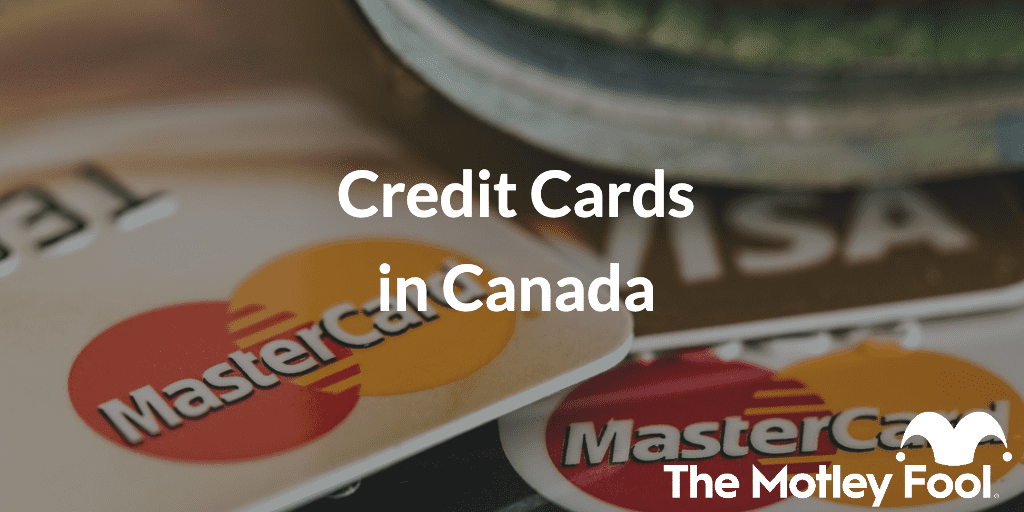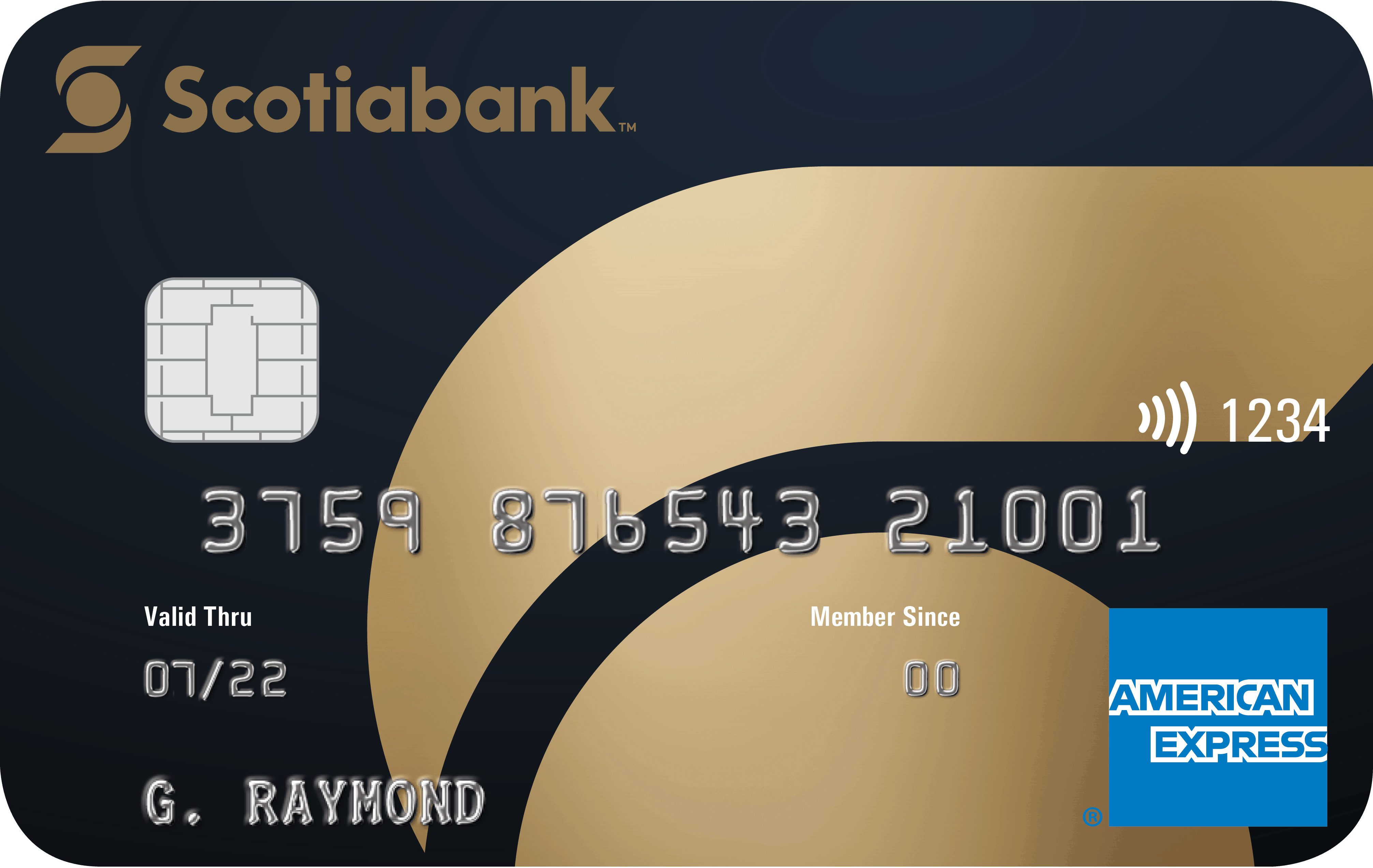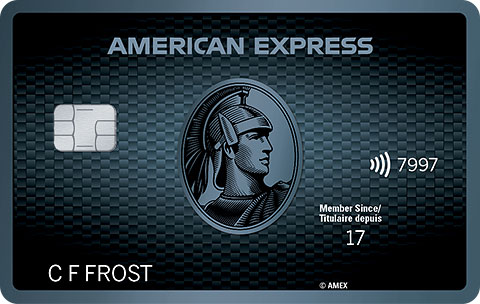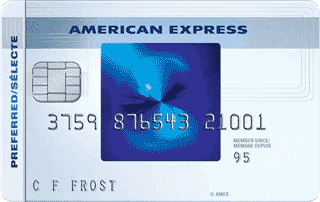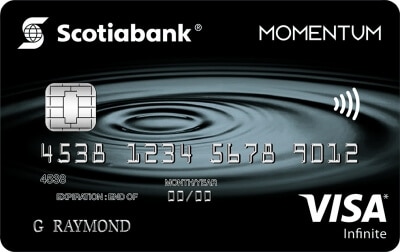The Motley Fool Canada’s personal finance content is reader-supported: we may earn a commission from offers on this page. It’s how we make money. But our editorial integrity ensures our experts’ opinions aren’t influenced by compensation.
How to use our top credit card picks
Our goal is for this page to be as useful as possible to you in actually choosing a new credit card. So keep the following in mind while using this page.
A quick guide to credit-card types
As we mentioned above, the best credit card for you depends on choosing a card from a category that fits you. Here’s the speed-reader’s version of credit card types:
The Motley Fool Canada's best credit cards for 2021:
| Credit card | Best for | Rating |
| Tangerine Money-Back Credit Card | Best: No fee cashback card | |
| Scotiabank Gold American Express Card | Best: Rewards card | |
| American Express Cobalt ® Card | Best: Travel rewards card | |
| SimplyCash ™ Preferred Card from American Express | Best: Cashback card | |
| Scotia Momentum Visa Infinite Card | Best: Cashback on regular grocery spend | |
| Home Trust No Fee Secured Visa | Best: Credit building card | |
| PC Financial World Elite Mastercard | Best: Rewards for regular President's Choice shoppers |
More information about our top credit card picks:
Tangerine Money-Back Credit Card
Best: No fee cashback card
Rewards
- 2% Money-Back Rewards in two categories of choice
- 0.5% Money-Back Rewards on everything else
Welcome bonus
Earn an extra 15% back (up to $150) when you apply for a Tangerine Money-Back Credit Card by November 30, 2021 and spend up to $1,000 in everyday purchases within your first two months.*
Learn more
Click here to learn more about the Tangerine Money-Back Credit Card
Annual fee:
$0
Eligibility:
Credit rating: Fair
Minimum income: $12,000
Scotiabank Gold American Express Card
Best: Rewards card
Rewards
- 5x Scene+ points on eligible dining, grocery, and entertainment
- 3x Scene+ points on eligible gas, transit, and streaming services
- 1x Scene+ points on everything else
Welcome bonus
Up to 40,000 Scene+ points (worth up to $400 towards travel). No annual fee for the first year.
Learn more
Click here to learn more about the Scotiabank Gold American Express Card
Annual fee:
$120
Eligibility:
Credit rating: Good
Minimum income: $12,000
American Express Cobalt ® Card
Best: Travel rewards card
Rewards
- 5x Membership Rewards® on eligible food and drink
- 3x Membership Rewards® on eligible streaming subscriptions
- 2x Membership Rewards® on eligible travel and transit
- 1x Membership Rewards® on everything else
Welcome bonus
Up to 50,000 Membership Rewards® points in the first year (20,000 points when you spend $3,000 on the card in the first 3 months of card membership and 2,500 points per month for each month that you spend $500 on the card during the first year)
Annual fee:
$155.88 ($12.99 monthly)
Eligibility:
Credit rating: Fair
Updated: 08/20/2021. This post was not sponsored. The views and opinions expressed in this review are purely those of the author.
SimplyCash ™ Preferred Card from American Express
Best: Cashback card
Rewards
2% cash back on all spending (after your Welcome Rate ends)
Welcome bonus
Earn 10% cash back for the first 4 months (up to $400 cashback).
Annual fee:
$99
Eligibility:
Credit rating: Good
Updated: 09/16/2021. This post was not sponsored. The views and opinions expressed in this review are purely those of the author.
Scotia Momentum Visa Infinite Card
Best: Cashback on regular grocery spend
Rewards
- 4% at grocery stores, recurring bill payments, and subscription purchases
- 2% on gas and daily transit
- 1% on everything else
Welcome bonus
Earn 10% cash back on all purchases for the first 3 months (up to $2,000 in total purchases). No annual fee in the first year, including on supplementary cards. (worth up to $350)
Annual fee:
$120
Eligibility:
Credit rating: Very good
Minimum income: $60,000 (individual), $100,000 (household) or $250,000 assets under management
Home Trust No Fee Secured Visa
Best: Credit building card
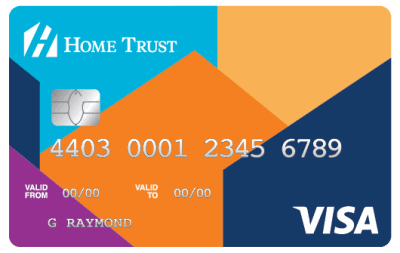
Rewards
None
Welcome bonus
None
Annual fee:
$0
Eligibility:
Must pay a security deposit from a Canadian account in your name
PC Financial World Elite Mastercard
Best: Rewards for regular President's Choice shoppers
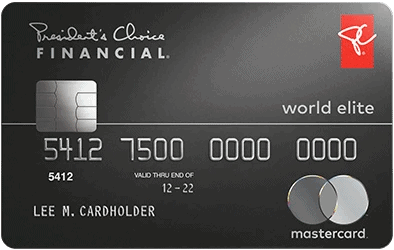
Rewards
- 30 PC Optimum points per $1 at President's Choice grocery stores (like Loblaws, No Frills, and valu-mart)
- 45 PC Optimum points per $1 at Shoppers Drug Mart
- 30 PC Optimum points per $1 at Esso, Mobil, and PC Travel
- 10 PC Optimum points per $1 everywhere else
Welcome bonus
Up to 100,000 points (a $100 value)
Read our full PC Financial World Elite Mastercard review
Annual fee:
$0
Eligibility:
Credit rating: Very good
Minimum income: $80,000 (individual), $150,000 (household)
Our review methodology for credit cards
Our ratings process is based on a combination of how we go about choosing the cards for our own wallets as well as what we view as important to the average Canadian.
So here’s a look at what we consider.
The key feature for each credit-card type
Each different credit-card type has a key benefit. Rewards cards give you rewards, so for these we focus on which cards allow you to earn the most rewards. Balance transfer cards provide period a low, or 0%, APR so that you can pay down your debt faster, so for these we consider the promotional rate and the period of time that rate lasts. Secured cards can help build credit, so for these we consider what they offer cardholders (credit monitoring, rewards, etc.) as they build their credit.
And so on.
In short, we look at what key features cardholders look for in a certain category and stack up the cards based on how well they deliver on those key features.
Annual fee
If it costs you money just to have the card, all things equal, it’s a worse deal than a card that doesn’t charge an annual fee.
Of course, all things aren’t always equal. Sometimes a card with an annual fee may offer so many benefits — particularly when it’s a rewards- or cashback-based cards — that the fee is more than worth it.
Credit card perks
There are a lot of other perks that credit cards offer. Travel cards may offer airport lounge access, a rewards card might give you mobile phone insurance coverage, while a secured card might offer access to your credit score.
These perks can be very valuable. But they’re also extremely hard to value. To some people, they will be highly valuable. Others may not use them as much. Still other cardholders may not use a given perk at all.
But we definitely don’t ignore these perks. We take note of all of the perks a card offers and when multiple cards are neck-and-neck in our reviews, a good selection of perks can boost one card higher on the list.
Interest rate / APR
Interest rates and APR do not play a role in our ratings for most credit cards.
Credit cards are a very bad way to borrow money. The interest rates are typically far higher than what you’d see when borrowing in other ways. So whether a card has a 22% APR or a 25% APR, our position remains: pay down your credit card so you don’t end up paying interest!
Meanwhile, through our own experience and by talking with consumers who aren’t us, we’ve come to the conclusion that people often put too much weight on APR when choosing a credit card. In a way it makes sense. APR is a standard, easily comparable number, and lower is naturally better. So when making a difficult choice among credit cards, it’s natural to gravitate to something that seems like it can help you make that choice.
For these reasons, we keep APR out of our reviews calculation.
If you find yourself thinking “hey, just wait a second!” while reading this, yes, we know the reality is that many, many people do carry debt on their credit card. And when you have credit card debt, the interest rate does matter.
Our view is that for those that have existing credit card debt, the best plan of action is to focus on paying that debt down first. Balance transfer credit cards can be a great way of drastically lowering credit card interest and allowing debt to be paid down more quickly. There are also cards that specifically market themselves as low-interest-rate cards — which usually still aren’t particularly low interest compared to other borrowing methods, but are low compared to most credit cards. There are also consolidation loans available, which allow you to bring all of your loans together and usually get a much better rate to pay them down over time.
So it is our strong suggestion (urging!) that you get serious about not carrying debt on your credit card(s). If you already have credit card debt, work towards paying it down. If your credit rating supports it, consider a balance transfer card or consolidation loan to help in the process. Then, make a plan — a.k.a. a budget — to help make sure you stay out of card debt in the future. And when you’ve done this, you’ll find that APR has very little bearing on which credit card will be best for you.
Naturally, all of this won’t be appropriate in every single case. So if you feel that APR is an important factor for you, you can use APR to help you choose.
Will our top credit card picks work for you?
Because we’re choosing our featured cards on the idea of the “average Canadian” (whatever that means, right?), our aim is that for most people reading this, yes, our top picks should equate to a better card for you.
There are some instances where our picks may not work for you. Here are the top reasons they may not:
- You spend a lot more than the average person. If you are a really big spender, your results could differ considerably from how we run our calculations. The quick remedy to this is to look for the higher-end cards among those we recommend. You’ll likely benefit more from these cards than the average user.
- You spend a lot less than the average person. If you spend a lot less than average, your results will also diverge from how we choose our featured cards. In this case, you’ll usually benefit from opting for a card with no annual fee. Yes, the perks may be fewer, but it should work out better for you overall.
- You expect that you will carry a balance on your card. We strongly suggest that you do not carry a balance on your credit card if you can at all avoid it. Borrowing rates on credit cards are not attractive and it’s good to exhaust other borrowing avenues and budget adjustments before incurring credit card debt. However, if know that you will need to carry a balance, you should take APR into account in addition to our card picks, since we do not include APR.
What are the types of credit cards?
Rewards cards
Rewards cards are credit cards that help you earn rewards on eligible purchases. The amount of rewards you get depends on the card, and it may depend on the item that you purchase, too.
Points-based rewards credit cards are those that provide you points when you make purchases. You can then exchange those points for a variety of things from goods and services to gift cards or even a statement credit. There are also cash back rewards, which provide cash or cash-like rewards, and we cover those separately below.
Though Canada has numerous points-based rewards cards, some of the best offer a generalized points system that rewards you for all of your spend or on a tiered basis for different types of spend. However there are some more specialized types of points cards that provide higher rewards for shopping at certain places or spending on certain things. The largest two categories here are travel cards and store credit cards.
Travel credit cards
For every purchase you make with a travel card, you get travel miles, which you can redeem for certain travel purchases. “Miles” can be confusing, however, as the miles you earn don’t correspond to the distance you can travel. Rather, your miles are more like points, with each point representing a certain dollar value.
For instance, you may have a travel card that gives you one mile for every dollar you spend. That mile, in turn, may equal roughly $.01. In this case, you’d have to earn 20,000 miles (or spend $20,000) to purchase a $200 flight.
Purchases that could be covered by travel miles generally include airfare, car rentals, hotel or other accommodation, cruises, and vacation rentals. As you’re looking at travel rewards, look for travel perks, too. Some cards will come with travel insurance, airport lounge access, or no foreign transaction fees.
Store credit cards
If you’re a shopper of habit, a store credit card may be right for you. These cards are issued by specific stores, such as Loblaws or Canadian Tire, and they help you get discounts, free stuff, and loyalty points. Of course, store credit cards are only useful if you shop at one store or its chains more frequently than others, as the rewards are usually only applicable at that store.
Cash back credit cards
As the name suggests, cash back cards allow you to earn money back for every purchase you make with your card. How much you get back depends on your card’s earn rate, which is typically expressed as a percentage. Depending on the card, you may earn more for certain purchases, such as groceries, office supplies, or even certain brand name items.
For example, let’s say you have a cash back card with a 2% earn rate on all purchases, and a 3% earn rate on groceries. For every $100 you spend, you’ll get $2 back, and for every $100 you spend on groceries, you’ll get $3 back.
Typically, the money that you get back can either be deposited as cash, applied to your statement balance, redeemed for a gift card, or sent to you as a check. Keep in mind, certain purchases won’t earn cash back, such as balance transfers, cash advances, gift card purchases, and lottery tickets.
Secured credit cards
Secured credit cards require you to pay a security deposit to open an account, usually one that’s equal to your credit line. The idea is that if you don’t make a payment, your credit card company can use your deposit toward the unpaid balance.
Credit card companies typically design these cards to help people with low or bad credit scores rebuild their credit. The security deposit helps the company hedge any risks in lending you money, and if you pay your balances frequently enough, you may be able to graduate to another card, one with more favorable rewards.
Balance transfer credit cards
Balance transfer cards allow you to move outstanding debt from one credit card to another, typically to benefit from the lower APR on a new card. These cards often come with a zero or low introductory APR, which can last anywhere from a few months to a year or longer, making them advantageous for those trying to get out of credit card debt. If you pay off your balance before the introductory period ends, you could save a great deal in interest.
Is no annual fee always best?
Not necessarily. Contrary to what you might think, credit cards with annual fees may help you earn money, not lose it. These cards typically have lucrative rewards programs, sign-up bonuses, and built-in perks that make them well worth the costs.
How do you know when a card is worth the annual fee? Simple. Weigh the added rewards against the extra costs. For example, if a credit card has an annual fee of $95, you want to be sure your rewards exceed at least $95. So, for a card with a 5% reward rate, you’d have to spend at least $1,900 to break even ($1,900 x 5% = $95).
What credit score do you need?
In Canada, a good credit score is generally anything above 700.
Keep in mind, your credit score is a three-digit number that lenders use to assess how well you manage your debts. Credit scores in Canada range from 300 to 900, with 300 being poor and 900 meaning your credit is golden.
If your credit score is above 700, you’ll likely qualify for most premium and platinum credit cards, though with a score of 750 or higher, you’ll get more lucrative offers and lower interest rates. Anything lower than 700 starts to get more complicated. A score that’s between 660 and 699 will put you in the “average” category, meaning you may pay a higher APR than most cardholders. If your score is lower than 660, you’ll most likely have to take out a secured card, which requires you to put up an initial deposit before you can use the card.
How do credit card rewards work?
Credit card rewards typically work in three big ways: you can earn cash back, credit card points, or travel miles.
- Cash back: when your card has a cash back system, you’ll typically get a percentage back for every purchase you make. A 1% cash back rate, for instance, means you’ll get $1 for every $100 that you spend.
- Credit card points: instead of a cash back percentage, your credit card company may give you points for every purchase you make, and those points can be converted to goods, services (like travel), or cash-like rewards like gift cards or statement credits. Dollar-values can be calculated for these points, though that value can vary considerably based on what you exchange the points for.
- Travel miles: travel miles work similarly to credit card points. You rack up miles for every purchase you make. The difference between the two systems is travel points usually can only be applied toward travel purchase, whereas credit card points aren’t as restrictive.
Most rewards programs allow you to redeem cash back or credit card points as cash, cheques, gift cards, or even as a statement credit. Travel miles are usually only applicable toward travel related purchases, such as airfare and rental cars, though some credit card companies may allow you to apply your miles to your balance.
What credit card fees should you look out for?
Credit card fees can come back to haunt you, but so long as you know which fees arise from which transactions, you can avoid paying them. Here are some common fees to look out for.
Annual percentage rate (APR)
Every credit card has an annual percentage rate (APR), which is charged to unpaid balances. As long as you pay your balance in full each month, you won’t pay APR.
Cash-advance fees
Using your credit card to withdraw money from an ATM may seem convenient, but it’ll cost you. Every credit card has a cash advance fee, which is either a flat fee or a percentage of what you withdraw.
Additionally, if you don’t pay back what you withdraw before your billing cycle ends, you’ll pay a cash-advance APR. Keep in mind, in Canada, certain “cash-like” purchases may be treated as cash-advances, such as buying travellers cheques, lottery tickets, casino chips, or wiring money.
Foreign transaction fees
Many credit cards will charge you for making purchases outside of Canada. Sometimes, this fee is a flat rate. Other times, it’s a percentage of your purchase. Still other times you can waive the fee completely, if your card allows foreign transaction fees (many travel cards do).
Late payment fees
If you don’t pay your minimum balance before your billing cycle ends, you’ll pay a late payment fee. This fee is often the most costly, but also the most avoidable. Just pay your minimum before the due date, and you’ll dodge this hefty fee.
Overlimit fee
If you exceed the limits on your credit card, you’ll pay an overlimit fee for each additional purchase, typically $25 to $30 for each additional transaction.
What credit card terms should you know?
Credit limit
Your credit limit is the most you can spend without paying penalties. Your credit card company will determine your credit limit based on your credit score and the length of your credit history. As long as you keep making payments and use credit responsibly, your limits will grow over time.
Interest-free grace period
During a grace period, you don’t pay interest on any purchases you make. Though grace periods vary by card, they typically last through your entire billing cycle. As long as you pay your balance in full before the billing cycle ends, your grace period extends into the next billing cycle. But, if you don’t pay your balance in full, your grace period ends, and you’ll pay APR on new purchases. Not only that but you’ll also pay APR on any past purchases that you still haven’t paid off.
Minimum payments
Your minimum payment is the absolute minimum you have to pay in order to avoid paying late fees and remain in good standing with your credit card company. While you definitely want to pay at least your minimum, paying your entire balance is always better, as you’ll avoid paying APR, too.
Some offers on The Motley Fool are from our partners — it’s part of how we make money and keep this site going. But does that impact our reviews? Nope. Our commitment is to you. If a product isn’t any good, our review will reflect that, or we won’t list it at all. Also, while we aim to feature the best products available, we do not review every product on the market.

